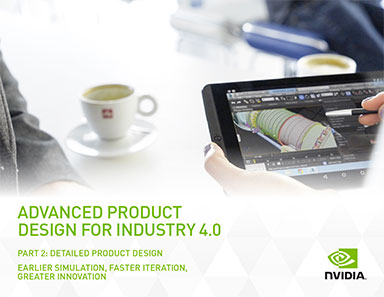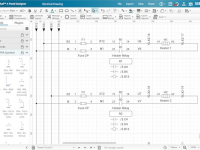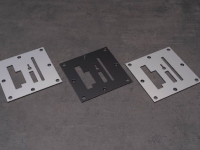Advanced Product Design: Earlier Simulation, Faster Iteration, Greater Innovation
The detailed design process is complex and requires time, effort, and expertise to tackle efficiently.

February 13, 2020
The world of product development, manufacturing and production is changing. With Industry 4.0 we’re on the brink of a new dawn of automation and intelligence, with smart, connected products and the smart factories that produce them.
Autonomous drones capture progress as a new production cell layout is commissioned. Deep Learning-enabled devices with computer vision perform quality checks on the production line and provide data to continually improve processes. Intelligent, collaborative robots, “aware” of their environment, work alongside humans to assist with assembly tasks.
Advanced computing devices harvest huge amounts of data from products in the field, to feed design and simulation systems and help ensure that next-generation products learn from those that have gone before.
Virtual reality (VR) presents everyone in the development process with the information they need in a rich, immersive, and collaborative environment. Ultra-powerful workstations are used to design, simulate, and visualize products, production cells, and factories. Then, once manufactured, virtual products—or “digital twins”—can be connected through the Internet of Things (IoT) to their real-world manifestations.
At the heart of all of these processes, NVIDIA plays a strategic role in empowering the manufacturing industry to implement Industry 4.0. For the past 20 years, NVIDIA has sustained investments in research and development (R&D) to continually push the boundaries of graphics processing unit (GPU) technology. The use of GPUs has, for some time, extended far beyond simply powering computer graphics displays and design software.
Today, a wide range of NVIDIA software and hardware solutions enables manufacturers to develop artificial intelligence (AI) capabilities for industrial collaborative robots and autonomous vehicles in the smart factory. In addition, advances in GPUaccelerated workflows are powering productivity improvements and speeding time-to-market as manufacturing companies move forward with advanced product design for Industry 4.0.
The NVIDIA® Quadro® visual computing platform is helping product design teams radically transform the traditional product development process. The introduction of leading-edge technologies such as AI, virtual reality (VR), interactive physically based rendering, real-time engineering simulation, and 3D graphics virtualization, are driving the development of the next generation of smart, connected products.
Fill out the information below to download the resource.
Latest News









